Season’s Greetings
Students share interfaith, nontraditional holiday celebrations
One of the best features of the winter season for many is having something to celebrate — whether it’s Christmas, Hanukkah, Thanksgiving, the Winter Solstice or any other festive event, the holidays offer a time of joy and togetherness to conclude the year.
While most spend the season focused on just one celebration, some partake in many, and others simply have outside-the-box ways of enjoying their holiday(s) of choice.
In this collection of stories, students delve into their interfaith holiday experiences and non-traditional winter season celebrations.
Facts Behind the Faith
Religion is the belief in God or gods, who people worship and celebrate. It can be the focus of someone’s life and can affect the way they act and think, depending on their religion.
According to Lumen Learning, 80% of Americans identify as Christian, 5% identify as celebrating a non-Christian religion and 15% have no religious affiliation.
Each of these various religions holds a set of responsibilities, such as following their God or gods — but by being a part of two religions, these responsibilities are doubled.
More than 20% of Americans were raised in a household with two different religions, such as having a Jewish mother and a Christian father, according to Pew Forum.
By having these percentages of religions in America, we are able to see the diverse range of religions celebrated here at BV, and how they influence our classmates and teachers.
Cultural Connections
Across Blue Valley, students of all backgrounds use the holiday season to take
part in different cultural traditions, from food to games to language.
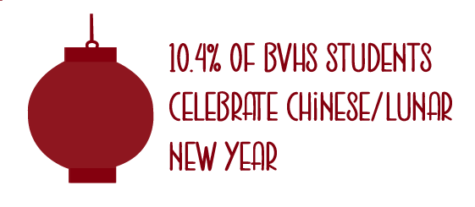
For sophomore Lindsay Cho, the holiday season begins in November with chuseok, or Korean Thanksgiving.
“There’s this rice cake with sweet sesame seeds inside (songpyeon), and you usually eat this rice cake soup (ddukgeuk),” Cho said. “There are different games — there’s one where you take an arrow, and you try to throw it into a basket. There’s another one similar to hacky sack where you take a mini pom pom and try to keep it in the air.”
Similarly to chuseok, Cho and her family celebrate Korean New Year, known as seollal, during the month of February. In addition to annual foods, Cho partakes in another significant custom: saebae.
“[Saebae is a] tradition where you bow down to your elders,” Cho said. “Then, they’ll say a blessing for you or their hopes and you get money from them.”
Similarly to seollal, senior George Xue and his family celebrate Chinese New Year during the month of February with special cultural traditions.
“You have the staple Asian dishes like dumplings,” Xue said. “With dumplings, we used to put money in them, but instead we’ll put nuts or sweets in them. You’re considered lucky if you can get those.”
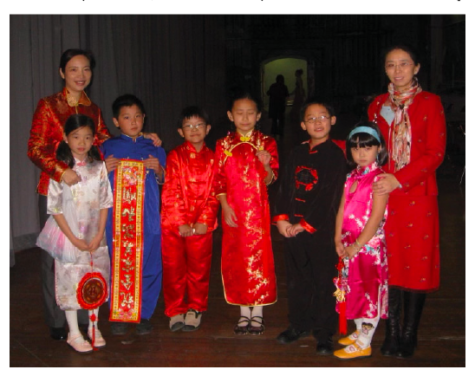
Another practice Xue partakes in during Chinese New Year involves red packets. This tradition is very similar to Cho’s saebae.
“We say staple phrases like ‘Shēntǐ jiànkāng,’ which basically means ‘keep your body healthy;’ then you’ll say the phrase ‘Hóngbāo ná lái,’ which means ‘bring the red packets,’” he said. “The packets will have money in them. Traditionally it will be Rénmínbì, which is China’s currency, but my family usually does American currency and [the amount] depends on however much your parents feel like giving.”
While many BV students are able to visit relatives who live in the U.S. during the holiday season, both Cho’s and Xue’s extended families live in Korea and China, respectively. This has made technology an essential during the holiday season, especially with COVID deterring travel plans.
“If we didn’t have technology, it would be really difficult to write letters back and forth across a span of days,” Xue said. “Now that FaceTime is a thing, it’s really cool to be able to celebrate something that they hold dear and is traditional to them.”

Cho also recognizes that while access to technology and the celebration of chuseok and seollal can bridge the physical gap between her family in the States and her family in Korea, she still feels a disconnect between herself and Korean culture after growing up in the U.S.
“Being here, it’s so distant sometimes,” Cho said. “I talk to my Korean friends or relatives, and I realize the culture is just so different. It’s such a barrier I probably won’t ever be able to cross fully.”
Though distance can create a cultural divide, both students are grateful they are able to participate in culturally significant activities during the holidays. However, Xue reminds students that while he and others may celebrate the holiday season differently, there are oftentimes more similarities than differences.
“As an Asian American, we don’t really celebrate different things — for example: Thanksgiving,” Xue said. “Chinese people don’t celebrate that, but as an Asian American, we celebrate it because we’re American citizens. It’s not something so foreign that it’s hard to wrap your mind around. If you participate in one of the activities, you’ll realize how many things we pull from both cultures and hodge-podge together into whatever we’ve created.”
Celebrating the Longest Night
The day after Halloween, it felt like the stores were packed with merchandise for the Christmas holiday despite it being nearly two months away. Many associate the winter season with the Christmas holiday, but there are many other celebrations around the same time that often get swept up in the majority’s excitement for Christmas.
On Tuesday, Dec. 21, Shab-e Yalda, the celebration of the winter solstice, will happen. Many will celebrate the longest night of the year, the arrival of winter and the victory of light over darkness — one of these people is senior Darya Moiny.
Shab-e Yalda is a holiday with Zorastrian roots, one of the oldest religions in the world; it has shifted from being a religious holiday to more of a cultural holiday that many people in Iran celebrate, despite the country now being mostly Islamic. This shift happened after the Muslim conquest of Persia.
Moiny celebrates alongside loved ones.
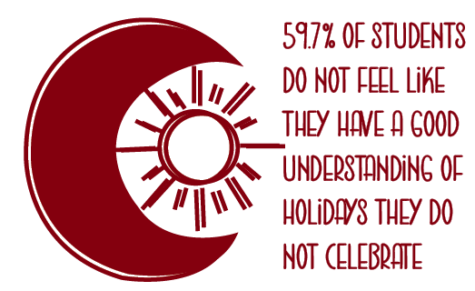
“We always call our extended family in Iran, where almost everyone except for my immediate family lives, and we talk on the phone,” she said. “My family and I have sometimes gotten together with other Iranian family friends in the area, so we can all feel less distant from our culture.”
Shab-e Yalda, which is rich in culture, features authentic cuisine.
“Some of my favorite activities include eating pomegranates, which I am amazing at cutting and preparing, as well as watermelons,” she said. “Both important fruits symbolize the shades of dawn and life.”
Besides eating, Shab-e Yalda also includes a practice called Hafez, which is Persian for “the memorizer.”
“One person who can sing the Hafez really well will open up the book to a page and pass the book around, and read each person’s fortune on the page beneath the poem,” Moiny said. “As the book is passed around the room, each person’s fortune is read from the next page.”
Growing up in the United States, Moiny and her sister also celebrate Christmas — just not in a religious sense. She doesn’t feel judged for celebrating Shab-e Yalda on top of it, mainly because of people’s lack of knowledge of the holiday.
“Most people here know it as the first day of winter or the longest night of the year and nothing more,” she said. “It reminds me of how a lot of people don’t know about Nowruz, an even larger and more culturally important Persian holiday celebrating the first day of spring.”
At the end of the day, even though Shab-e Yalda isn’t as well known as Christmas or Hanukkah, Moiny’s love for the holiday and the connections to herself and the culture that come with it shine brightly.
“I appreciate that it’s not just some blip on a calendar telling me the seasons have changed, but that it’s more than that,” she said. “Even though its casual, it is an interesting way to connect to my culture and the years of history tied not just into the holiday, but also my ethnicity.”
Dual Holidays
Since her dad is Christian and her mom is Jewish, sophomore Ella Kirwan shares her experience with both Hanukkah and Christmas.
“I don’t really celebrate the religious part [of Christmas],” she said. “I just get together with family [Christmas] morning and we trade presents and enjoy [each other’s] presence.”
Kirwan has been celebrating Christmas with her family since she was a little kid, but after being introduced to Judaism, she knew it was for her.
“In fourth grade my mom decided to put me in this group called TAG, which is part of Beth Torah, which is a synagogue,” she said. “I used to celebrate more Christian practices, but after my mom put me in the synagogue, I started celebrating more Jewish practices.”

Kirwan was excited to honor Hanukkah this year with her family and complete the annual activities that come with it.
“We usually light the menorah — that’s usually only my mom, dad, and brother,” she said. “Just my immediate family celebrates [Hanukkah] together.”
Along with lighting the eight candles, Kirwan also commemorated the holiday in other ways.
“[We] recite the Hebrew prayers and sometimes eat traditional Hanukkah dishes for dinner,” she said.
While Kirwan is Jewish and mostly celebrates Hanukkah, there were some adjustments made to make both holidays work.
“I usually don’t receive presents for Hanukkah,” she said. “I receive presents on Christmas morning and get together with family for lunch.”
While juggling both holidays can be hard, at the end of the day, Kirwan loves being able to connect and spend time with every member of her family.
“I find it fun to participate in both holidays,” she said.
Keeping Family Traditions Alive
Spanish teacher Steven Dean and his son Alex take part in celebrating both Christmas and Hanukkah, as Alex’s dad comes from a Christian family and Alex’s mom comes from a Jewish family. Dean grew up going to church and celebrating Christmas.

“I went to church every Sunday until I got a job at 16,” Dean said. “Both my parents are very involved in religion; in fact, my dad is an Episcopal priest.”
When Dean was growing up he took part in the typical traditions that come with Christmas such as putting up a Christmas tree and stockings and also attending Christmas service either on Christmas Eve or Christmas morning. Dean and his family also had their own traditions for Christmas when he was growing up.
“My father would always read us the Bible story of Jesus’ birth on Christmas Eve and also ‘The Night before Christmas’ when we were little kids,” Dean said.
His wife is Jewish, so when they got married, they decided that they wanted their kids to be able to learn about both religions and celebrate Christmas and Hanukkah.
“I married into a Jewish family, and because family traditions are important to me, I wanted to keep alive my wife’s family traditions just as much,” Dean said. “Also, as far as religions go, Judaism is the Old Testament. It’s the religion of Jesus. So to me, it was all good — it didn’t matter.”
Alex and his family have attended both a church and temple in the past, but they are not currently attending either on a regular basis.
“When we moved [to Kansas] because we had some family here and they belonged to a temple, we decided we would join the temple,” Dean said. “We did that until we realized the temple didn’t hold the same values we held.”

Even though they do not attend a church or a temple, their family makes religion a priority, and they celebrate the religious aspects of both holidays. Ever since Alex was born, he has celebrated Christmas and Hanukkah with his family and they take part in traditions that come with both.
“We’re in Kansas for Hanukkah, and my grandparents who are Jewish will come over one or two nights of Hanukkah and eat dinner and open presents with us,” Alex said. “Every other year [including this year] we go to California and see my dad’s side of the family for Christmas.”
One of Alex’s favorite parts about Christmas is seeing his family and taking part in traditions.
“We make cookies, have stockings [and open] presents,” Alex said. “[We] have a Christmas dinner and a Christmas Day brunch or lunch with the family.”
Hanukkah also comes with its many traditions.
“There are eight nights of Hanukkah, and our parents will get me and my sister small gifts for a couple of the nights,” Alex said. “We will light the menorah every night, and typically one of the children does that in our family.”
Dean and his family put up decorations around their house for both Christmas and Hanukkah.
“We have a Christmas tree and we have stockings [for Christmas],” Dean said. “For Hanukkah, we have lots of different knick-knacks around the house. We have a Star of David that has blue lights, and that sits right next to the Christmas tree.”
They have made it so that celebrating both Christmas and Hanukkah does not bring up any challenges, and the Deans consider themselves lucky that both of their families are accepting.
“If both families are celebrating Christmas, you [have] to find a way to make it to both houses on Christmas Day, and that’s kind of a hassle — so it has been kind of nice,” Dean said. “We have Hanukkah, and then we have Christmas, and they are separate.”
The Deans have learned how to incorporate both religions into their life and keep family traditions alive.
“I know I brought up both my children with a very strong belief in God and the same values, so I feel pretty good about that,” he said.“I just have a strong belief that religion, done well — no matter the religion — makes the world a better place.”
Christmasukkah
While most students’ holiday seasons start in December, for senior Sarah Gordon, this year it started Nov. 28. Gordon’s family is both Christian and Jewish, so she celebrates both Christmas and Hanukkah.

“My mom [grew] up Catholic, regardless of whether or not she still follows that, and my dad’s side is Jewish,” she said. “That means we celebrate both holidays. Despite being non-religious, I partake in different holiday traditions like Christmas and Hanukkah.”
Traditionally, members of the community are only considered Jewish if their mother is, but Gordon’s parents decided to raise her and her siblings in the culture anyway. Her family has tried hard to not lean too far in either direction.
“We always put out non-specific lights that don’t go with either holiday,” she said. “We put out rainbow lights and white lights as opposed to red and green or blue and gold, the colors of Christmas and Hanukkah. We also like to put up stockings for all of our pets.”
Gordon has found that it can be hard to balance both holidays, but she has started to figure it out over time.
“I tried to coin the term ‘Christmasukkah’ a couple years back,” Gordon said. “As a non-religious person, I care a lot more about the experiences and the feelings associated with the holidays than the actual [religious] meaning itself.”
Finding merits in the morals of the season, Gordon explains there is more to the holidays than the religious aspects.
“It’s important for a lot of people [to honor] how Hanukkah and Christmas came to be,” she said. “For me personally, I associate it a lot more with the spirit of family and getting together and, importantly, the spirit of giving and camaraderie.”
Over the years, Gordon’s family has learned to celebrate both holidays in conjunction, focusing on the importance of gathering as a family.
“It’s definitely difficult considering I have a very large family,” she said. “Both of my parents’ parents are divorced, so I have four sets of grandparents. It’s definitely about making sure you have the ability to spend time with
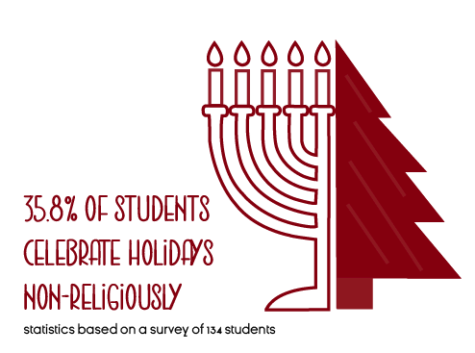
everybody because, especially for retired people, just being able to see you and communicate with you and figure out what’s going on in your life means so much. Even though everybody’s busy, since there’s an extra break from school, that helps to be able to connect with people and organize events.”
Due to her background and the practices that she engages in, Gordon feels she has learned a lot from her holiday experiences.
“Being interfaith has definitely made me want to learn more about religion, even though I am not spiritual,” she said. “I am friends with a lot of spiritual people from different religions. I really enjoy learning about other people’s religions because it sort of shapes and inspires my worldview, and I take bits and pieces from other people’s experiences to shape my opinions.”
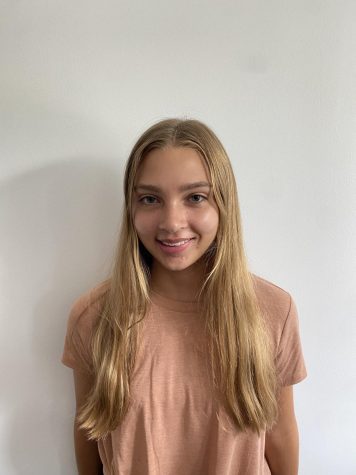
Amy Collins is a sophomore and she is looking forward to her first year on the newspaper staff. She plays tennis for Blue Valley High School and Amy...

Kaitlin Green is a senior and is one out of the three publication editors. In school, Kaitlin is a captain for the Tigerette Dance Team and a student...

Isaac Hudson is a senior and one of the editors-in-chief this year. It is his fourth year on staff. He is also the president of BV’s Latin Club, and...
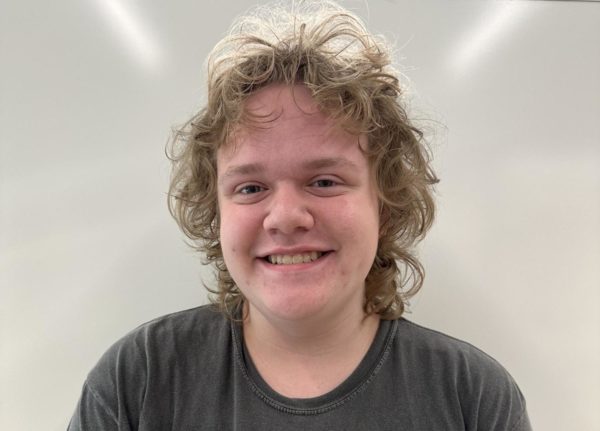
Harris Jones is a senior and the assistant editor, aka “the guy,” on staff this year. Outside of Newspaper, Harris is a library aide, a member of Quill...
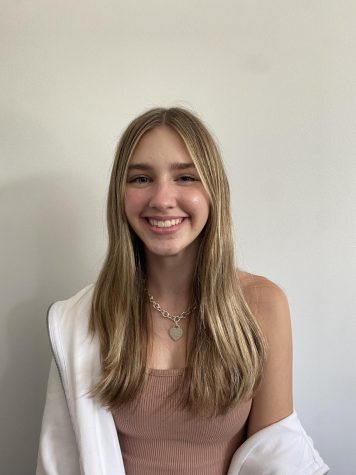
Chanie Rankin is a sophomore and this is her first year on staff. She is involved in the School Store, Tigerette Dance Team, French Club, and more....
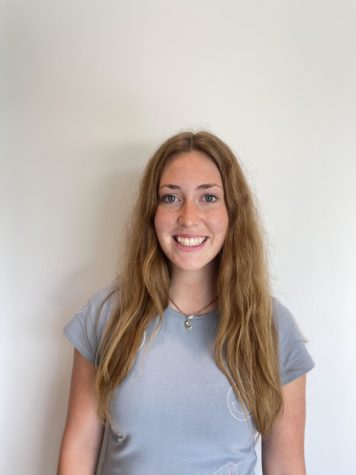
Charley Thomas is a senior and serves as Editor-in-Chief of the Tiger Print this year. At BV, she is a member of the Varsity Volleyball Team, Student Council,...




